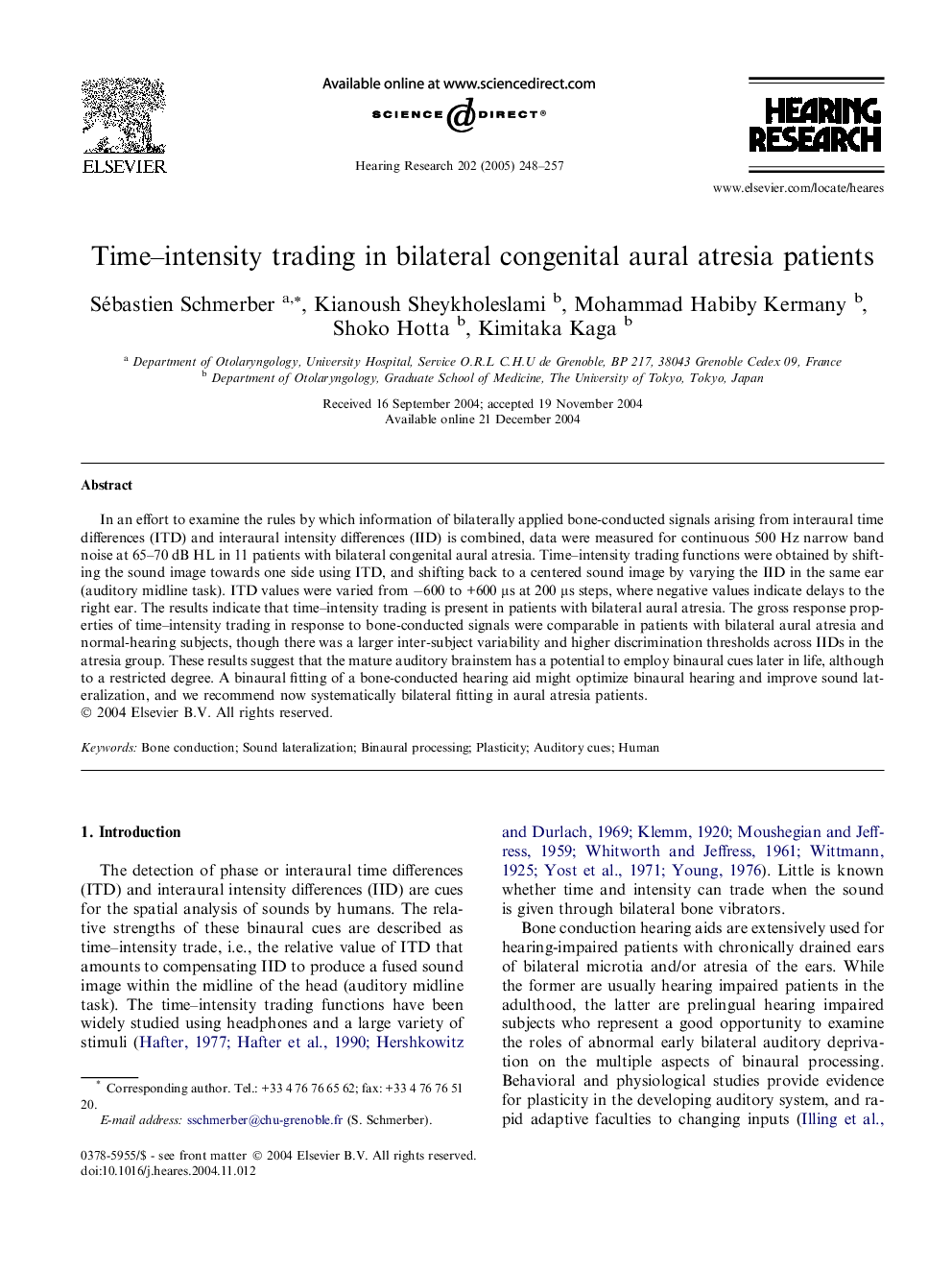| Article ID | Journal | Published Year | Pages | File Type |
|---|---|---|---|---|
| 9436581 | Hearing Research | 2005 | 10 Pages |
Abstract
In an effort to examine the rules by which information of bilaterally applied bone-conducted signals arising from interaural time differences (ITD) and interaural intensity differences (IID) is combined, data were measured for continuous 500 Hz narrow band noise at 65-70 dB HL in 11 patients with bilateral congenital aural atresia. Time-intensity trading functions were obtained by shifting the sound image towards one side using ITD, and shifting back to a centered sound image by varying the IID in the same ear (auditory midline task). ITD values were varied from â600 to +600 μs at 200 μs steps, where negative values indicate delays to the right ear. The results indicate that time-intensity trading is present in patients with bilateral aural atresia. The gross response properties of time-intensity trading in response to bone-conducted signals were comparable in patients with bilateral aural atresia and normal-hearing subjects, though there was a larger inter-subject variability and higher discrimination thresholds across IIDs in the atresia group. These results suggest that the mature auditory brainstem has a potential to employ binaural cues later in life, although to a restricted degree. A binaural fitting of a bone-conducted hearing aid might optimize binaural hearing and improve sound lateralization, and we recommend now systematically bilateral fitting in aural atresia patients.
Related Topics
Life Sciences
Neuroscience
Sensory Systems
Authors
Sébastien Schmerber, Kianoush Sheykholeslami, Mohammad Habiby Kermany, Shoko Hotta, Kimitaka Kaga,
